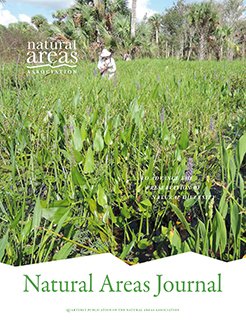Reference sites with relatively unaltered plant communities are used regularly to establish targets for ecological restoration, yet few are free from anthropogenic disturbances. In this study, we sought to understand the capacity for native community indicators and other plant species to recover from abandoned woods roads and tilled soils within reference sites. We mapped disturbances in a 34 ha portion of the Wade Tract, an old-growth longleaf pine-wiregrass (Pinus palustris-Aristida stricta) woodland using GPS and LiDAR and counted stems of 25 native species (20 woody and 5 herbaceous) in plots within disturbances (n = 32; disturbed), 3 m adjacent to disturbances (n = 32; adjacent), and >5 m from any disturbance (n = 30; reference). Ten species were considered indicator species of intact longleaf pine woodlands. We also quantified soil conditions within the disturbed, adjacent, and reference sites. Disturbed sites had more compacted surface soils than adjacent or reference sites and, in a subset of the sites, soil bulk density and soil strength were greater in disturbed than in adjacent. Indicator species were less frequent in disturbed sites than in adjacent or reference sites (except for Quercus pumila). Three oaks (Q. incana, Q. margaretta, and Q. laevis) and 3 other woody species (Rhus copallinum, Sassafras albidum, and Morella cerifera) were significantly less common in the disturbed sites than in adjacent or reference sites. The near absence of some oaks and other woody species on disturbed sites warrants including these species as indicators of intact regional ground cover for longleaf pine woodlands. Legacies of small-scale soil disturbances in relatively undisturbed perennial-dominated ground cover flora reveals the potential for cumulative degradation over decades and underscores the need to avoid such disturbances in remnant longleaf pine woodlands.
How to translate text using browser tools
19 January 2022
Long-Term Recovery of Selected Indicator Species Following Soil Disturbance and Compaction in an Old-Growth Longleaf Pine (Pinus palustris) Woodland
R. Todd Engstrom,
J. Kevin Hiers,
Kevin M. Robertson,
J. Morgan Varner,
James Cox,
Joseph J. O'Brien,
Scott Pokswinski
ACCESS THE FULL ARTICLE

Natural Areas Journal
Vol. 42 • No. 1
January 2022
Vol. 42 • No. 1
January 2022
indicator species
native ground cover
oaks
reference conditions
soil disturbance




